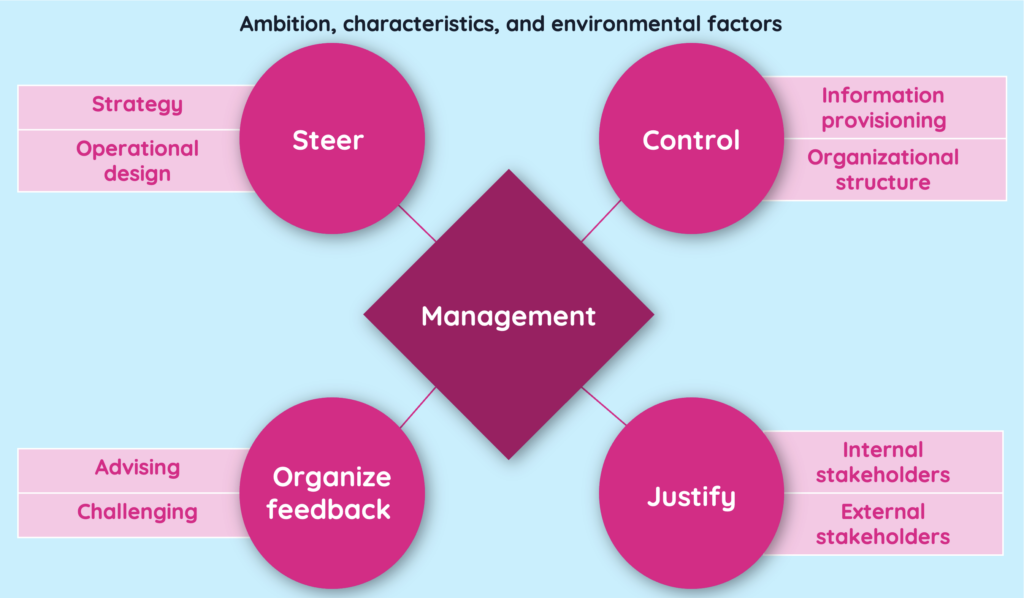Future-proofing governance for start-ups, scale-ups and SMEs in transition: leveraging the diamond model
Source: NEMACC, Erasmus University, and Utrecht University of Applied Sciences Governance, what is it, and why is it important for corporations, start-ups, and scale-ups? Governance is the structure of rules, practices, and processes used to direct and manage a company. For larger organizations, the focus is usually on corporate governance, which is more compliance focused. For start-ups and scale-ups, the key focus is on performance and value creation. There are various models, and the Diamond model is one of the most interesting and easy to use. The Diamond model is a dynamic and integrated approach designed to enhance the governance of small and medium-sized enterprises (SMEs). The goal is to steer organizations towards long-term success by focusing on performance and value creation. Significant research about the diamond model of SMEs governance was conducted by NEMACC, in collaboration with a team from Erasmus University led by Prof. Dr. Auke de Bos RA, and the Financial-Economic Advice Lectorate Innovation at Utrecht University of Applied Sciences. This study focused on exploring the aspects of good management and supervision within SMEs, with a particular emphasis on the role of the accountant. The model comprises four key governance processes: steering, controlling, justifying, and organizing feedback. These are further broken down into eight practical components to provide a structured yet flexible framework. This dual nature allows companies, start-ups and scale-ups to adopt formal or informal governance mechanisms based on their maturity, industry, and regulatory context. Steer Steering involves setting the strategy and operational plans. A well-articulated strategy is critical as it provides direction to all stakeholders involved (top-management, employees, shareholders, and customers) and helps translate long-term goals into short-term actions. Maintaining strategic agility is vital in the face of changing conditions. Therefore, sustained attention to strategy and its implementation is essential for business survival in a rapidly changing environment. Control Controlling is about being ‘in control’ and includes setting an organizational structure that matches the company’s scale and goals and ensuring that the information delivered to stakeholders is timely, relevant, and accurate. This foundation enables effective management and accountability. Justify Justifying focuses on accountability to internal and external stakeholders, aiming to increase their engagement which, in turn, can improve company performance. Organize feedback Organizing feedback is about embracing advisory and challenging roles. In SMEs, where formal oversight may be less pronounced, the need for critical advice and feedback is increasingly important. External advisors can play a crucial role in helping SMEs navigate complex and turbulent environments. Implementing the Diamond model means applying these principles in a practical, evidence-based manner. It offers companies a clear guide for discussing and instilling good governance, with the flexibility to adapt to their unique situations and contexts. This model has multiple benefits: it promotes clear communication, allows for strategic adaptability, and encourages stakeholder engagement—all of which are cornerstones of sustainable SME success. Enhancing Strategic Governance: The Scorecard Tool At The Value Department, we build on the Diamond Model by using a tool that enhances our strategic approach—the Diamond Model Scorecard. We use the scorecard to assess companies in transition, providing a comprehensive evaluation of their governance drivers based on the Diamond Model. This tool enables us to assess the current status of each driver using a simple yet effective traffic light system: red, amber, or green. The final column of our scorecard provides strategic recommendations based on the evaluation. Beyond identifying strengths and weaknesses, we offer actionable insights to enhance the organization’s governance structure. This valuable feature ensures that our clients not only understand their current standing but also receive guidance on the next steps toward strategic excellence. Incorporating the Diamond Model Scorecard into our work allows us to provide all relevant stakeholders with a holistic view of their governance landscape and empower them to make informed decisions for future success. It is a valuable tool to initiate conversations and inquire about the progress with employees on those topics, providing an effective means to gather feedback. Furthermore, the Diamond Model also helps to adjust the governance structure during strong growth and evolution, ensuring that the insights gleaned from the Scorecard facilitate strategic decision-making for sustained success and adaptability. As a final point for consideration, we ponder: Where does culture find its place? While this aspect is partly integrated into the organizational structure (control) and internal stakeholders (justify), it warrants explicit attention as a distinct subject in the evaluation of the Diamond Model and corresponding Scorecard. Stay tuned for more updates on how this easy-to-use tool shapes the way we approach strategic transitions.

